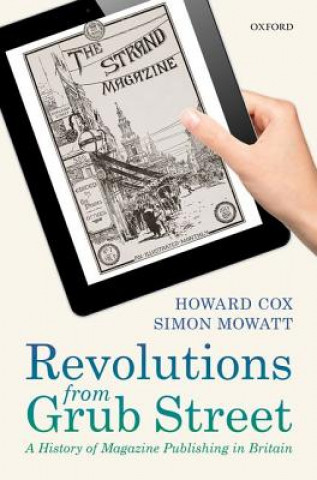
Delivery
Shopping guide





Doesn't suit? No problem! You can return within 30 days
 Gift voucher
any value
Gift voucher
any value
You won't go wrong with a gift voucher. The gift recipient can choose anything from our offer.
Revolutions from Grub Street
 English
English
 239 b
239 b
 Delivery to Austria
Delivery to Austria
30-day return policy


Revolutions from Grub Street charts the evolution of Britain's popular magazine industry from its seventeenth century origins through to the modern digital age. Following the reforms engendered by the Glorious Revolution of 1688 the Grub Street area of London, which later transmuted into the cluster of venerable publishing houses centred on Fleet Street, spawned a vibrant culture of commercial writers and small-scale printing houses. Exploiting the commercial potential offered by improvements to the system of letterpress printing, and allied to a growing demand for popular forms of reading matter, during the course of the eighteenth century one of Britain's pioneering cultural industries began to take meaningful shape. Publishers of penny weeklies and sixpenny monthlies sought to capitalise on the opportunities that magazines, combining lively text with appealing illustrations, offered for the turning of a profit. The technological revolutions of the nineteenth century facilitated the emergence of a host of small and medium-sized printer-publishers whose magazine titles found a willing and growing audience ranging from Britain's semi-literate working classes through to its fashion-conscious ladies. In 1881, the launch of George Newnes' highly innovative Tit-Bits magazine created a publishing sensation, ushering in the era of the modern, million-selling popular weekly. Newnes and his early collaborators Arthur Pearson and Alfred Harmsworth, went on to create a group of competing business enterprises that, during the twentieth century, emerged as colossal publishing houses employing thousands of mainly trade union-regulated workers. In the early 1960s these firms, together with Odhams Press, merged to create the basis of the modern magazine giant IPC. Practically a monopoly producer until the 1980s, IPC was convulsed thereafter by the dual revolutions of globalization and digitization, finding its magazines under commercial attack from all directions. Challenged first by EMAP, Natmags, and Conde Nast, by the 1990s IPC faced competition both from expanding European rivals, such as H. Bauer, and a variety of newly-formed agile domestic competitors who were able to successfully exploit the opportunities presented by desktop publishing and the world wide web. In a narrative spanning over 300 years, Revolutions from Grub Street draws together a wide range of new and existing sources to provide the first comprehensive business history of magazine-making in Britain.
About the book
 English
English
Categories


 Contact
Contact How to shop
How to shop















